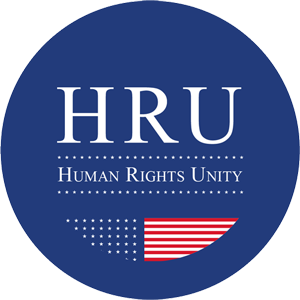Committee for the Fight against Discrimination and Harassment


Let’s recall some key historical dates in the fight against discrimination:
August 26, 1789, the Declaration of the Rights of Man and of the Citizen: Article 1 – “All human beings are born free and equal in dignity and rights. Social distinctions may be founded only upon the general good”
In 1945, we had the Preamble to the United Nations Charter: “The Preamble of the United Nations Charter of 1945 proclaims the belief of the signatory countries in the fundamental rights of man, in the dignity and worth of the human person, in the equal rights of men and women and nations, big and small.
In 1948, the Universal Declaration of Human Rights: “The Universal Declaration of Human and Citizen Rights of 1948 affirms the need to protect fundamental freedoms and the need to guarantee political, social and economic rights for every human being and proclaims that all human beings are born free and equal in dignity and rights. This declaration has only limited legal value.”
In 1965: International Convention on the Elimination of All Forms of Racial Discrimination, ratified by France in 1971: “The International Convention for the Elimination of All Forms of Racial Discrimination of 21 December 1965. This convention, ratified by France in 1971, solemnly affirms the need to rapidly eliminate all forms and manifestations of racial discrimination in all parts of the world and to ensure understanding and respect for the dignity of the human person”.
What is discrimination?
Discrimination is an act done against one or more individuals against whom one has a negative bias. Any discrimination causes physical, material or psychological harm. Discrimination is always present because the human being has a “brain” that categorizes and provokes generalizations leading to stereotypes.
Categorization is a daily mechanism that we use subconsciously to simplify the understanding of our environment. We define categories and “arrange” things in “boxes” as they are presented to us. Prejudices are preconceived opinions or judgments, most often influenced by social environment, education or beliefs, about a given person or social group. This representation, often negative, is a way of enhancing the perceived value of one’s own origin or social affiliation. They are mostly passed on from family, education and the cultural environment that influences our attitudes, our behavior and our judgment. In most situations, it’s not really based on objective data.
Stereotypes are also simplifiers for understanding the environment. Naturally, social bonds will be created with people sharing the same stereotypes, which will reinforce the basic idea because each human being is built in a world that is his/her own. We create our own mind map based on our life experiences. Prejudice is beyond the stereotype because it induces a negative attitude towards the people or elements considered. Moreover, it is not based on an experience but on a prejudice. We judge without knowing.
Here are the 25 criteria of discrimination:
Origin
Sex
Family situation
Pregnancy
Physical appearance
Particular vulnerability resulting from economic situation, apparent or known by the perpetrator
Family name
Health status
Loss of autonomy
Disability
Genetic characteristics
Customs
Sexual orientation
Gender identity
Age
Political views
Union activities
Ability to speak in a language other than French
Real or presumed belonging to an ethnic group
Real or presumed belonging to a nation
Real or presumed belonging to a certain race
Real or presumed beliefs or belonging or non-belonging to a particular religion
Place of residence
Philosophical views
Bank domiciliation
RDH exists to uphold human rights and RDH advocates for these fundamental rights for all human beings. There are two types of discrimination: direct and indirect.
What are direct and indirect discrimination?
Direct discrimination: Art. 1 paragraph 1 of law 2008-496 of May 27, 2008; “Direct discrimination results from a situation in which, based on a person’s belonging or non-belonging, real or presumed, to an ethnic group or race, his religion, beliefs, age, disability, sexual orientation or gender, the person is treated less favorably than another is treated, was treated or will have been treated in a comparable situation. ”
Indirect discrimination: Art. 1 paragraph 2 of law 2008-496 of May 27, 2008
“Indirect discrimination results when a seemingly neutral provision, criterion or practice which, for one of the reasons mentioned in the first paragraph, may be of particular disadvantage to persons in relation to other persons, unless that such provision, criterion or practice is objectively justified by a legitimate aim and the means to achieve that end are necessary and appropriate.” Indirect discrimination is most frequently collective.

